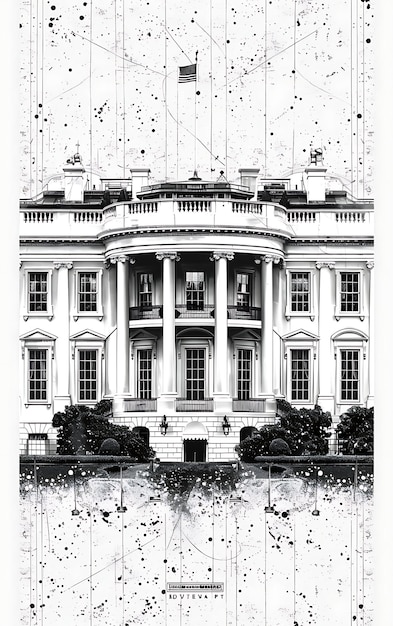The Cold War’s Impact on US Foreign Policy in 2025

The Cold War’s Lingering Influence: Understanding US Foreign Policy in 2025 reveals how Cold War ideologies and geopolitical strategies continue to shape the United States’ approach to international relations, defense, and diplomacy in the modern era.
The **Cold War’s Lingering Influence: Understanding US Foreign Policy in 2025** requires an exploration of how the geopolitical tensions and ideological battles of the past continue to resonate in contemporary American foreign policy.
Understanding the Cold War’s Enduring Relevance
The Cold War, despite its end in the early 1990s, left an indelible mark on the United States. Its impact extends far beyond historical archives, influencing the very fabric of US foreign policy.
Examining this influence requires understanding not only the historical context but also how its principles, anxieties, and strategic imperatives continue to shape American actions on the global stage. The Cold War molded institutions, strategic alliances, and a global outlook that persists to this day.
The Shaping of Institutions
The Cold War era led to the creation and strengthening of key institutions within the US government, each designed to counter Soviet influence and project American power.
- The Department of Defense: Expanded significantly, consolidating military power and increasing its budget to levels unseen during peacetime.
- The CIA: Evolved into a major intelligence agency, conducting covert operations and gathering information across the globe.
- The National Security Council: Established as a coordinating body to integrate foreign policy and national security concerns.
These institutions, born out of the Cold War, continue to operate with structures and missions shaped by that era. Their existence and influence reflect the enduring nature of Cold War priorities in US governance.

Ideological Underpinnings and Their Modern Echoes
At the heart of the Cold War was an ideological struggle between capitalism and communism. This battle shaped not only geopolitical strategies but also the underlying principles guiding US foreign policy.
These ideological underpinnings continue to influence American actions, particularly in regions where democratic values are perceived to be under threat. Understanding these historical ideologies helps explain the continuity in US foreign policy over the decades.
Promoting Democracy and Human Rights
A core tenet of US foreign policy during the Cold War was the promotion of democracy and human rights as alternatives to communism. This commitment remains a central theme in contemporary US foreign policy.
- Interventionist Policies: The US has historically supported democratic movements and intervened in countries where human rights are severely violated.
- Economic Aid: Providing economic aid to countries transitioning to democracy has been a common strategy.
- Public Diplomacy: Efforts to promote democratic values through cultural exchange programs and media outreach continue to this day.
The Concept of Containment
The strategy of containment, designed to prevent the spread of communism, provides a framework for understanding current US foreign policy challenges. Elements of containment extend beyond traditional military strategies to encompass economic and political tools.
The concept of containment continues to influence the US approach to rising powers that challenge its global dominance or promote alternative political systems. Examples include how the US engages with nations viewed as strategic threats.
Strategic Alliances Forged in the Cold War Era
The exigencies of the Cold War necessitated the formation of strong strategic alliances, most notably the North Atlantic Treaty Organization (NATO). These alliances continue to play a critical role in US foreign policy.
Understanding the historical context of these alliances is essential for comprehending their persistence and continued relevance in addressing modern geopolitical challenges. These partnerships are not merely historical artifacts; they are dynamic entities adapting to current realities while still deeply rooted in Cold War imperatives.
NATO: A Cornerstone of US Foreign Policy
NATO, founded in 1949, remains a cornerstone of US foreign policy, providing a collective defense framework that unites North America and Europe.
- Military Readiness: Maintaining a high level of military readiness among member states to deter potential aggression.
- Collective Security: Encouraging coordinated responses to security threats, reinforcing the principle of collective security.
- Adaptation to New Threats: Adjusting its strategies to address new threats, such as cyber warfare and disinformation campaigns.
NATO’s expansion and adaptation over the years demonstrates the enduring strategic value placed on the alliance by the United States. The US continues to invest heavily in NATO, viewing it as a vital tool for maintaining stability and projecting influence.
The Military-Industrial Complex and Defense Spending
President Dwight D. Eisenhower warned of the rise of the military-industrial complex, a powerful nexus of military, political, and economic interests. This complex has had a significant and lasting impact on US foreign policy.
The legacy of this complex continues to influence debates over defense spending, military interventions, and technological innovation, making it a critical factor in understanding the trajectory of US foreign policy.
Perpetuation of High Defense Spending
The Cold War led to a dramatic increase in defense spending, creating a powerful lobby of defense contractors and military officials. This dynamic continues to influence budgetary decisions today.
The push for technological superiority persists, driving investment in advanced weaponry and research and development. This focus is evident in initiatives like the modernization of nuclear arsenals and investment in artificial intelligence for military applications.

Regional Conflicts and Proxy Wars
The Cold War played out in numerous regional conflicts and proxy wars around the globe. These conflicts often pitted the US and its allies against Soviet-backed forces, leaving a legacy of instability and influencing current geopolitical dynamics.
These historical events continue to shape US foreign policy in these regions, influencing decisions on intervention, aid, and diplomatic engagement.
Ongoing Tensions in Proxy War Locations
Many regions that were battlegrounds during the Cold War continue to experience instability and conflict, requiring ongoing US attention and involvement.
- Korea: The Korean War remains unresolved, with the US maintaining a military presence in South Korea to deter aggression from North Korea.
- Vietnam: The legacy of the Vietnam War continues to influence debates over military intervention and the limits of American power.
- Afghanistan: The Soviet invasion of Afghanistan in 1979 contributed to the rise of extremist groups that continue to destabilize the region.
Current US policy in these regions is often framed by the lessons learned from the Cold War, emphasizing the need for strategic alliances, localized solutions, and caution in large-scale interventions.
Looking Ahead: US Foreign Policy in 2025
As the world moves further away from the Cold War era, its influence on US foreign policy is evolving. However, the strategic and ideological frameworks established during that time continue to shape how the US approaches global challenges.
These factors will influence how the US navigates the complex geopolitical landscape of 2025. Adapting these strategies to new threats and opportunities will be crucial for maintaining US influence and promoting its interests.
Adaptation and Innovation
Looking ahead, US foreign policy will need to adapt to new realities while still drawing on the lessons and structures of the Cold War era.
The ability to innovate and adjust these strategies will be essential for navigating the challenges and opportunities of the 21st century. As the US reshapes its foreign policy, understanding the interplay between Cold War legacies and contemporary imperatives will be vital for maintaining its global position.
| Key Point | Brief Description |
|---|---|
| 🏛️ Institutions | Cold War agencies like the CIA and NSC still shape US policy. |
| 🤝 Alliances | NATO endures as a vital framework for US foreign policy. |
| 🛡️ Defense | Military-industrial complex influences high defense spending. |
| 🌍 Conflicts | Proxy wars’ legacy affects US policy in Korea, Vietnam, Afghanistan. |
https://www.youtube.com/watch?v=QnK58634bYE
FAQ
▼
The Cold War shaped institutions and ideologies that persist in US foreign policy. This includes the CIA, NSC, and a commitment to promoting democracy.
▼
Alliances like NATO, formed during the Cold War, remain central to US foreign policy. It is also still vital for collective defense and strategic partnerships.
▼
The military-industrial complex, as warned by Eisenhower, perpetuates high defense spending. It also influences military interventions and technological innovation.
▼
Yes, regions like Korea, Vietnam, and Afghanistan, once battlegrounds during the Cold War, continue to require US attention and influence. All of them also affect US policy.
▼
US foreign policy is adapting by innovating strategies, addressing new threats, such as cyber warfare. It also seizes opportunities in a shifting global landscape.
Conclusion
In summary, the Cold War’s legacy continues to shape US foreign policy in complex and profound ways. From institutional frameworks to strategic alliances and ideological commitments, the echoes of the Cold War remain evident in how the US navigates the global stage. As the world evolves, adapting these historical legacies to new challenges and opportunities will be crucial for ensuring the effectiveness and relevance of US foreign policy in 2025 and beyond.





